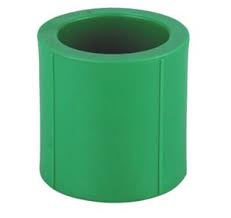Dec . 30, 2024 17:32 Back to list
Wholesale HDPE Corrugated Pipe Dimensions and Sizes for Various Applications
Understanding Wholesale HDPE Corrugated Pipe Sizes
In the realm of construction and drainage systems, High-Density Polyethylene (HDPE) corrugated pipes have become essential components due to their durability, flexibility, and marked resistance to various environmental factors. This article will delve into the specifics of wholesale HDPE corrugated pipe sizes, highlighting their importance in various applications and providing insights for builders, contractors, and engineers.
What is HDPE Corrugated Pipe?
HDPE corrugated pipe is a type of piping made from high-density polyethylene, characterized by its circular cross-section and corrugated (wavy) design that enhances structural strength. This pipe type is predominantly used for stormwater management, drainage, and sewer applications due to its lightweight properties and ease of installation compared to traditional materials like concrete or metal.
Size Variability and Its Importance
When selecting HDPE corrugated pipes for specific projects, size is a critical factor. The sizes available in the wholesale market typically range from 4 inches to 48 inches in diameter. The specific size to choose will depend on various factors such as the volume of water to be managed, the type of terrain, and local regulations.
Understanding that corrugated pipes are often made in standard lengths (usually 10 or 20 feet) is also crucial. The standardization of length allows for easier transportation and handling on the job site but can pose challenges for projects requiring custom lengths. In such cases, wholesalers often offer cutting services to meet individual project needs.
Benefits of Various Sizes
The variety of sizes available allows engineers to choose the most appropriate pipe for their specific application. Smaller diameter pipes (4 to 12 inches) are commonly used for residential drainage and downspouts, effectively managing runoff water from rooftops or driveways. In contrast, larger diameter pipes (24 inches and above) are often utilized in commercial developments and municipal infrastructure to handle significant water flow and prevent flooding.
Moreover, larger pipes can also accommodate siltation and sedimentation systems, where the size allows debris to settle effectively before entering the drainage system. For instance, a larger diameter pipe can ensure that the water flows smoothly without obstruction, maintaining the efficiency of the drainage system.
wholesale hdpe corrugated pipe sizes

Factors Affecting Pipe Size Selection
Several key factors come into play when determining the appropriate size of HDPE corrugated pipes. These include
1. Flow Characteristics Understanding the expected flow rate is critical. Hydrologic studies can assist in determining how much water needs to be managed, which will dictate the size of the pipe required.
2. Soil Type The type of soil can impact drainage efficiency. For example, clay soils may retain more water compared to sandy soils, potentially requiring larger pipes to handle excess water.
3. Local Regulations Many regions have specific building codes or standards that dictate the minimum sizes for drainage systems, particularly in flood-prone areas.
4. Installation Environment The environment in which the pipe is to be installed (urban vs. rural, flat vs. hilly terrain) can influence the pipe diameter required for effective drainage.
Wholesale Availability
Purchasing HDPE corrugated pipes wholesale can offer significant cost savings, especially for large projects requiring extensive piping systems. Many suppliers provide a wide range of sizes and lengths, ensuring that contractors can find the exact specifications needed for their applications. Looking for wholesalers that offer bulk pricing, reliable delivery, and potential customization options can further enhance project efficiency.
Conclusion
In summary, understanding the various wholesale HDPE corrugated pipe sizes is fundamental for professionals in construction and drainage management. The flexibility in size allows for the effective handling of water, tailored to specific project needs while also contributing to sustainable environmental practices. By considering factors such as flow characteristics, soil type, local regulations, and installation environment, engineers and contractors can make informed decisions that enhance the durability and efficiency of drainage systems. Investing in high-quality HDPE corrugated pipes not only assures structural integrity but also promotes effective water management strategies crucial for modern infrastructure.
-
High-Quality PVC Borehole Pipes Durable & Versatile Pipe Solutions
NewsJul.08,2025
-
High-Quality PVC Perforated Pipes for Efficient Drainage Leading Manufacturers & Factories
NewsJul.08,2025
-
High-Quality PVC Borehole Pipes Durable Pipe Solutions by Leading Manufacturer
NewsJul.08,2025
-
High-Quality PVC Borehole Pipes Reliable PVC Pipe Manufacturer Solutions
NewsJul.07,2025
-
High-Quality UPVC Drain Pipes Durable HDPE & Drain Pipe Solutions
NewsJul.07,2025
-
High-Quality Conduit Pipes & HDPE Conduit Fittings Manufacturer Reliable Factory Supply
NewsJul.06,2025

